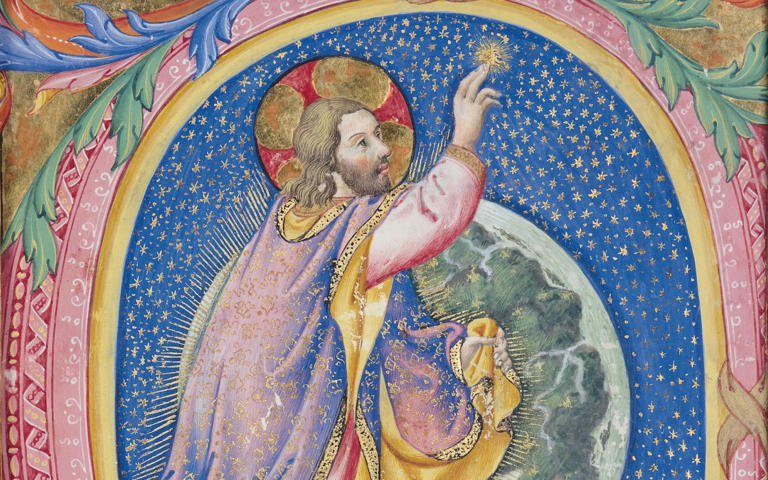Sacred Mysteries: The starwright who bursts forth like the sun








Sacred Mysteries: The starwright who bursts forth like the sun
We sang at church something that does belong to Advent instead of jumping the gun with a Christmas carol. It was Creator of the stars of night, which is none other than a translation by that indefatigable Victorian, J M Neale, of a seventh-century Latin hymn.
The original, Conditor alme siderum, seems to me to have a pure simplicity rather like the starlight it contemplates. In fact the siderum of which God is the dear creator, alme conditor, was regarded as the whole visible heavens, including planets, which, the medieval mind was very well aware, followed separate paths from the stars.
The hymn was incorporated into vespers, suitably, for it speaks of the world reaching evening, meaning that creation had grown old expecting the coming of Messiah, the Christ. Then in the third stanza, the hymn daringly deploys an energetic figure from the Psalms. Psalm 19 (18 in the Vulgate numbering) says that in the heavens, God “set a tabernacle for the sun, which cometh forth as a bridegroom out of his chamber”.
This hymn did not invent the metaphor of the Son of God arriving at Christmas like the sun. The prophet Malachi has the Lord of hosts saying: “Unto you that fear my name shall the Sun of righteousness arise with healing in his wings.” (That is why Charles Wesley in Hark! The Herald Angels Sing wrote: “Hail the Sun of Righteousness! Light and life to all He brings, ris’n with healing in His wings.” He knew well enough that God incarnate as a man does not have wings, but he happily employed the Hebrew figure of speech. I understand the Hebrew word kanaph signifies wings, a corner of the earth, the edge of a garment.)
Anyway, Conditor alme siderum boldly uses the idea of a chamber to stand for the womb of the Virgin Mary, from which Christ came forth like a bridegroom. The image hardly comes over in the translation by Neale, but Dr Eleanor Parker, of Brasenose College, Oxford, a great populariser of valuable medieval texts, has written a fascinating blog taking in a translation written 800 years before his.
A hymnal from 11th-century Canterbury puts this literal translation above each line of Latin, with the Old English beautifully written in red letters. It has Christ coming forth like “brydguma of brydbure” – bridegroom from bridal bower. (Also pleasingly, the Old English rendering of the Latin vespere mundi, “the evening of the world”, is there aefening middeard.)
Dr Parker has also blogged about a Middle English translation of the hymn, by William Herebert, a Franciscan friar and lecturer in theology at Oxford, who lived from about 1270 to 1333. He used the equivalent of our word wright (playwright, wheelwright) to translate conditor, “creator”, making the first line: “Holy wrouhte of sterres brryht”.
Something strange then befell the Latin hymn in the 17th century. Pope Urban VIII wanted hymns in the breviary to have a more classically correct clothing. In 1632 Conditor alme siderum was rewritten as Creator alme siderum. Of its 20 lines only one survived unchanged, the second, aeterna lux credentium “eternal light of believers”.
I suppose people got used to the new version, but after the Second Vatican Council in the 1960s a Latin version based on the original text was substituted. Among its peculiarities it changed an archaic but striking use of a Greek word in Latin form to address God: agie, from hagios, “Holy One”. Sancte has the same meaning, but doesn’t stand out like some uncut gem on an ancient reliquary.
- Opinion by Christopher Howse: The Telegraph
Articles-Latest
- Using Vibrational Aromatherapy In Treatment - 2
- Taliban step up security ahead of supreme leader’s Kandahar mosque visit on Eid
- Using Vibrational Aromatherapy In Treatment
- The BI-Gendered God-She-male Gods & The Roots of Christianity
- Geometry and Myth-She-Male Gods & the Roots of Christianity
- Muslim Council Demands Investigation Into Islamophobia in the Conservative Party
- What does the Bible say about homosexuality? Well, for starters, Jesus wasn’t a homophobe
- King Charles attends Easter service, providing a glimpse of the monarch after cancer diagnosis
- We must stand up to religious extremism in the UK before it tears us apart,’ writes Frederick Chedam
- Trump compares himself to Jesus Christ – again
- Pope makes last-minute decision not to deliver Palm Sunday Mass homily
- New York City's mayor gets baptized in jail by Rev. Al Sharpton on Good Friday
- Pope Francis calls predecessor Benedict a key transitional figure
- Lawyers hit out at Vatican’s ‘trial of the century’ after Pope secretly changes law four times
- What we know about the killing of Detroit synagogue leader Samatha Woll
- Sodomy and theology: the feverish birth of the King James Bible
- Africa's Catholic hierarchy refuses same-sex blessings, says such unions are contrary to God's will
- After decades of struggle for a place in Israel, dozens of Black Hebrews face threat of deportation
- Purgatory in the Bible
- Pope’s new ruling on blessings for same-sex couples does not change Catholic teaching - bishop
Articles-Most Read
- Home
- Let There Be Light
- Plants that feel and Speak
- The Singing Forest
- The Singing Forest-2
- Introduction
- Meditation
- Using Essential Oils for Spiritual Connection
- Heaven Scent
- Plants that Feel and Speak-2
- Purification
- Making the Spiritual Connection
- Anointing
- The Sanctity of Plants
- Essential Oils: The unseen Energies
- The Aroma Of Worship - Introduction
- The Aroma Of Worship-Foreward
- Methods Of Use
- Spiritual Blending
- Handling and Storage







